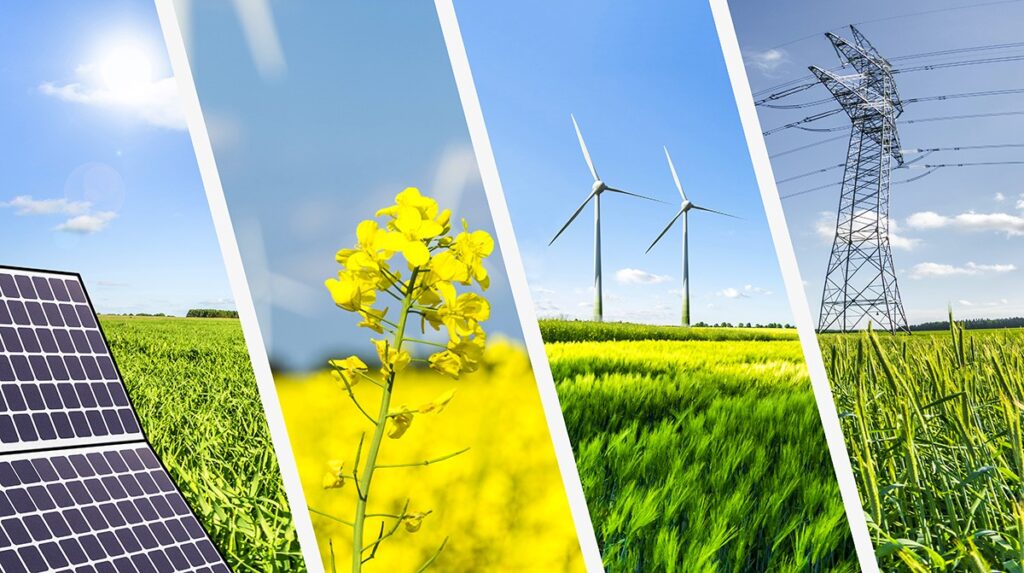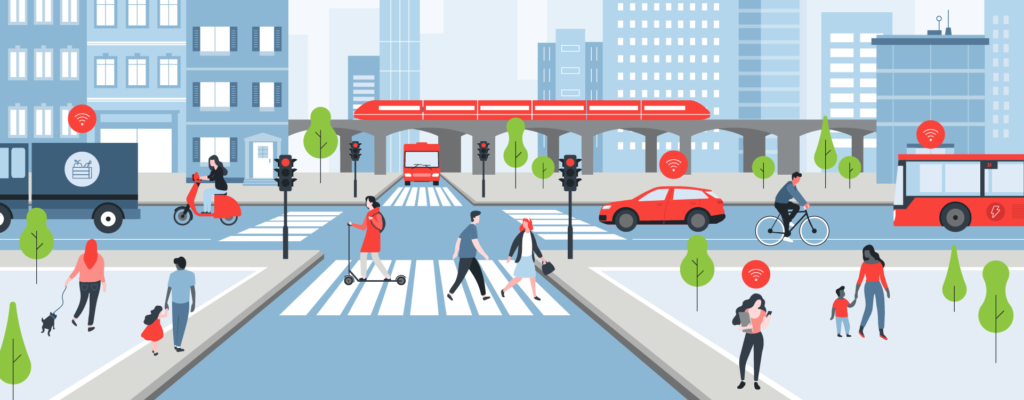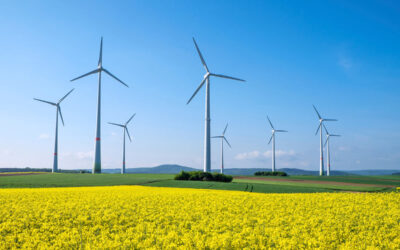The way we produce and consume electricity is undergoing a transformation that holds profound implications for our planet and our daily lives. With the increasing recognition of the environmental impact of conventional energy sources, a shift toward eco-friendly electricity generation has become paramount. This article explores the significant changes in our power generation and distribution systems, the benefits of greening the grid, and the ways in which eco-friendly electricity is impacting our lives.
A Sustainable Energy Revolution

Electricity generation has long relied on fossil fuels like coal, oil, and natural gas. These conventional sources, while providing energy for centuries, come at a significant environmental cost. The combustion of fossil fuels releases harmful greenhouse gases into the atmosphere, contributing to global warming and air pollution. In response to these issues, the world is witnessing a paradigm shift towards sustainable energy sources.
Renewable Energy Sources
Renewable energy sources, such as solar, wind, and hydropower, have gained prominence in recent years. Solar panels harness the power of the sun, wind turbines capture the energy of the wind, and hydropower generates electricity from flowing water. The appeal of these sources lies in their sustainability, as they produce no greenhouse gas emissions and have minimal environmental impact. Sustainable energy is really important in the medical field and in places like STD clinic in Marietta GA.
These renewable energy sources are rapidly expanding, with solar and wind farms becoming a common sight across the globe. As these technologies advance, they are driving a greener, more sustainable future for electricity generation. This shift away from fossil fuels not only reduces our carbon footprint but also creates new economic opportunities and jobs in the green energy sector.
Grid Modernization
Transitioning to eco-friendly electricity involves more than just changing our energy sources. It also requires a revamp of our power grids. Grid modernization involves upgrading and optimizing the infrastructure that delivers electricity to our homes and businesses. Smart grids, for example, use advanced technology to enhance efficiency and reliability.
The integration of renewable energy sources into the grid necessitates innovative solutions to accommodate their intermittent nature. Energy storage systems, like large-scale batteries, help bridge the gap between energy generation and consumption. As a result, we have a more resilient and adaptable grid system, capable of delivering cleaner energy while maintaining stability.
The Benefits of Greener Electricity
The adoption of eco-friendly electricity offers numerous advantages, ranging from environmental benefits to economic advantages.
Reduced Environmental Impact
Perhaps the most obvious benefit of greening the grid is its positive impact on the environment. By decreasing our reliance on fossil fuels, we significantly reduce greenhouse gas emissions, helping combat climate change. This reduction in emissions also results in improved air quality and lower rates of respiratory illnesses, benefiting public health.
Additionally, eco-friendly electricity sources have a lower environmental footprint. Solar panels and wind turbines take up relatively little space compared to coal or natural gas power plants. This means less habitat disruption and reduced land use.
Energy Cost Savings
Eco-friendly electricity can also translate into savings for consumers. Solar panels on residential rooftops, for example, allow homeowners to generate their own electricity and reduce their reliance on the grid. Excess energy can be sold back to the grid, potentially leading to lower energy bills. The declining cost of renewable energy technologies makes it increasingly affordable for both individuals and businesses to adopt these solutions. If you want to help the planet even more you can use the best dry shampoo in your daily use because it is completely natural and eco-friendly.
Energy Security and Independence
Eco-friendly electricity contributes to greater energy security and independence. By diversifying our energy sources, we reduce our vulnerability to supply disruptions and price fluctuations associated with fossil fuels. Moreover, local energy production, such as solar arrays in homes and businesses, can contribute to greater energy self-sufficiency and resilience in the face of emergencies.
The Impact on Our Lives

The transition to eco-friendly electricity has a profound and tangible impact on the way we live. It touches various aspects of our daily routines, from the way we power our homes to the vehicles we drive.
Cleaner and Quieter Cities
One of the most noticeable changes is the transformation of our cities. The adoption of electric vehicles (EVs) is on the rise, reducing urban air pollution and noise. Charging stations for EVs are becoming ubiquitous, making electric transportation more convenient. As EV technology advances, we are witnessing the emergence of a cleaner, quieter, and more sustainable urban environment.
If you want to work as an engineer for EVs you need to take test prep in Bettendorf first.
Sustainable Living
The shift toward eco-friendly electricity aligns with the broader concept of sustainable living. Many individuals and communities are embracing a more sustainable lifestyle, including the use of energy-efficient appliances, LED lighting, and green building practices. These choices not only reduce energy consumption but also lead to savings on utility bills.
Did you know that the US government works with a company that makes plantation shutters in Utah to create special blinds for windows that will generate solar energy?
The Rise of Distributed Energy
Another transformative aspect is the growth of distributed energy generation. Homeowners and businesses are increasingly producing their own electricity using solar panels and wind turbines. This decentralized approach not only contributes to reduced emissions but also fosters energy independence. It empowers individuals to take control of their energy production and consumption, reducing reliance on centralized utilities. If you want to learn more about distributed energy you can enroll in online courses.
The Future of Eco-Friendly Electricity
The transition to eco-friendly electricity is not merely a static shift but an evolving journey toward a more sustainable and responsible energy landscape. In this continuation of our exploration, we delve into the future of eco-friendly electricity, including emerging technologies, innovative solutions, and the global commitment to a greener grid.
If you want to test an electric vehicle so you can determine if it fits your needs you can use rent a car Beograd.
Innovations in Energy Storage
As we continue to expand our reliance on renewable energy sources, the need for efficient energy storage solutions becomes more pronounced. Energy storage is a linchpin in the quest for a sustainable energy future. Traditional batteries have already made substantial advancements in terms of capacity and cost reduction, enabling a broader integration of renewables into the grid.
If you want to install solar panels on your roof you can contact a company that provides roofing systems in Clarksburg MD.
However, the future of energy storage holds even more exciting innovations. Imagine batteries with unprecedented energy density and rapid charging capabilities. Researchers are working on technologies such as solid-state batteries that promise longer lifespans and improved safety. These innovations will further enhance the reliability and flexibility of renewable energy sources, making the transition to eco-friendly electricity more seamless.
Hydrogen as an Energy Carrier
Hydrogen is emerging as a key player in the green energy landscape. It is a versatile energy carrier that can store and transport energy, making it a compelling solution for industries that are difficult to electrify directly, such as heavy manufacturing and long-haul transportation. Be careful if you get in direct contact with hydrogen as it can damage your skin and in that case, you should contact Cheyanne Mallas PA to help you,
Green hydrogen, produced using renewable energy sources, is at the forefront of this movement. Electrolysis, a process that splits water into hydrogen and oxygen, powered by renewable energy, is a sustainable way to produce hydrogen. The generated hydrogen can be used in fuel cells to generate electricity, providing a clean energy option for various sectors.
Energy Internet and Decentralization
The concept of an “energy internet” is gaining traction. Similar to the internet’s decentralized nature, the energy internet envisions a distributed, interconnected network of energy producers and consumers. This shift towards decentralization minimizes the need for large, centralized power plants and grids.
The proliferation of microgrids is an example of this trend. Microgrids are small-scale, localized energy systems that can operate independently or in conjunction with the larger grid. They are particularly valuable for ensuring energy resilience during natural disasters and emergencies. As microgrid technology advances, it offers communities more control over their energy supply and reduces dependence on traditional utilities.
Integration of Artificial Intelligence
Artificial intelligence (AI) plays an increasingly significant role in optimizing the grid and enhancing the efficiency of renewable energy sources. AI can forecast renewable energy generation, predict energy demand, and manage the grid in real time. This dynamic approach ensures that energy supply matches demand, reducing waste and costs. If you want to create a website about AI you should watch web hosting service reviews to find the best hosting service
Smart homes and buildings are also benefiting from AI integration. Smart thermostats, for instance, use AI algorithms to learn user preferences and adjust heating and cooling systems accordingly. AI-driven appliances and lighting systems can optimize energy consumption, reducing bills and environmental impact.
Global Commitment to Carbon Neutrality
The transition to eco-friendly electricity is not confined to a single country or region. It is a global movement with a shared commitment to combating climate change and achieving carbon neutrality. The Paris Agreement, signed by 196 countries, is a testament to this collective commitment. Promotional products also help to reach as many people as possible.
Nations are setting ambitious targets to reduce carbon emissions and increase the share of renewables in their energy mix. Some countries have already made remarkable progress. Norway, for instance, generates a substantial portion of its electricity from hydropower and has a high rate of electric vehicle adoption. Denmark has become a wind energy powerhouse, exporting excess energy to neighboring countries.
If you want to move to a more eco-friendly country like the Netherlands you can contact one of the best mortgage brokers in Raleigh NC.
The Role of Sustainable Transportation

The greening of our electricity grid is intrinsically linked to the electrification of transportation. Electric vehicles (EVs) have gained widespread acceptance and are considered a pivotal element in reducing carbon emissions from the transportation sector. If you want to try out an EV you can contact a Limousine Service Company in Atlanta.
The automotive industry is experiencing a rapid transformation. Major automakers are investing heavily in electric vehicle development, resulting in a growing range of EV models that cater to different consumer preferences. Battery technology is advancing, enabling EVs to travel longer distances on a single charge.
In addition to personal transportation, electric buses, and trucks are entering the market, reducing emissions from public transit and freight transportation. The transition to electric mobility is not limited to light-duty vehicles but extends to heavy-duty applications, with electric trucks and buses gaining traction in urban environments.
Challenges and Opportunities
While the transition to eco-friendly electricity presents immense opportunities, it also comes with challenges that need to be addressed.
One of the primary challenges is the intermittency of renewable energy sources. Solar and wind power are subject to weather conditions, making consistent energy generation a complex task. To address this, researchers are working on energy storage, grid optimization, and interconnection solutions to ensure a reliable energy supply.
Another important thing is organic and healthy food. If you want to find healthy sweets you can eat frozen yogurt in Phoenix AZ.
Economic considerations also play a significant role. The upfront costs of transitioning to renewable energy sources and sustainable technologies can be a barrier for some individuals and industries. Policymakers are exploring financial incentives, subsidies, and tax breaks to encourage the adoption of eco-friendly electricity.
Another challenge is the need for an educated and skilled workforce. The renewable energy sector demands a workforce with expertise in various fields, from solar installation and wind turbine maintenance to grid management and energy storage technologies. Investments in education and training are essential to meet this demand.
If you want to sell your business so you can invest in eco-friendly companies contact m&a advisors.
The Road Ahead
As we look to the future of eco-friendly electricity, it is clear that we are on a transformative journey. The landscape of power generation and consumption is evolving, and the possibilities are promising. The integration of cutting-edge technologies, the global commitment to sustainability, and the electrification of transportation are all contributing to a greener and more sustainable world.
The road ahead requires a continued commitment to research and development, innovation, and cooperation. Governments, industries, and individuals must work together to accelerate the transition to eco-friendly electricity and combat climate change. With sustainable energy solutions becoming more accessible and affordable, the future is undoubtedly bright.
If you want to make your home more sustainable you can buy automatic window blinds in Colorado Springs because they can generate solar energy.
In conclusion, the transition to eco-friendly electricity is not a static change but an ongoing process, shaping our future in profound ways. It touches every aspect of our lives, from the way we power our homes and vehicles to the global commitment to a sustainable future. By embracing innovation and collective efforts, we can create a greener, cleaner, and more sustainable world for generations to come.

